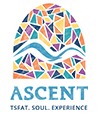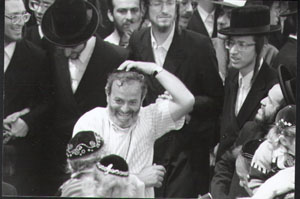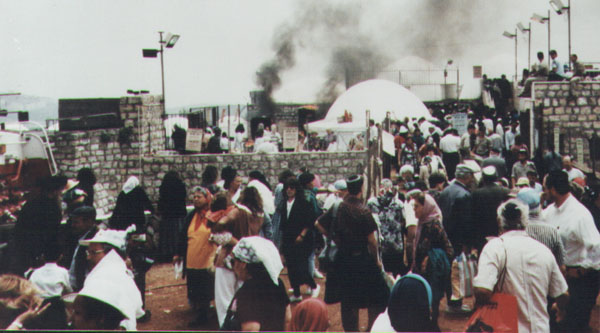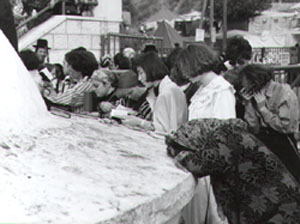by Yrachmiel Tilles
MERON is a sleepy mountain village a few miles west of Zefat that once a year undergoes a remarkable transformation. Each year on Lag b’Omer, 33 (in Hebrew letters: ?”? pronounced “LaG”) days after Passover Day, nearly 500,000 Jews of all descriptions converge upon it from all parts of the country–a significant percentage of the population in Israel at the time! [In 2009, from sunset to midnight 250,000 had already attended!] The highway is closed and traffic rerouted, as the whole area is covered with tents and vans for miles around. A temporary bus station is opened for the day that is one of the largest in the country.
In Jewish Law, Lag b’Omer is a cessation of the semi-mourning restrictions between Pesach and Shavuot, when marriages, haircutting and live music all become permitted. However, this massive pilgrimage is for an entirely different reason. Lag b’Omer is the “celebration” day of Rabbi Shimon Bar Yochai, whose burial site is on Mount Meron. Although Lag b’Omer is the anniversary of his death, in accordance with his express wishes it is treated as an occasion of great joy.
The rejoicing takes many forms (the reactions “most sublime” to “Jewish Woodstock!” have both been overheard). At night, many Sephardim recline in huge tents over multi-course dinners and live music, and during the day, dozens of sheep are kosher-slaughtered, barbecued, and consumed. Throughout the night and day, hundreds or even thousands of three-year-old boys, Ashkenazim and Sephardim alike, receive their first haircuts and peyot.
In the evening, enormous bonfires are kindled on the roof of the domed building, in honor of the shining spiritual light Rabbi Shimon brought into the world. For the entire 24 hours, groups of whirling Chassidim, with fervor beyond the usual even for them, dance near the fires or in the courtyard below, singing over and over the infectious traditional songs in praise of Rabbi Shimon.
Inside the small room reserved for men (the main room is used primarily by women-the common wall is built around and over the burial site) the air reverberates. Individuals and small groups study Zohar and recite Psalms, while the dense crowds continuously flowing into the room struggle to reach the tomb (said one amazed ASCENT participant upon his emergence: “I was breathing pure Jew!”). A strong tradition is tested to that anyone who prays sincerely “at Rabbi Shimon,” especially on Lag b’Omer, will be answered.
The steep winding path that leads to the tomb is tightly lined by booths. Many are manned by representatives of yeshivas and other worthy causes, and people cheerfully donate b’z’chut (“in the merit of”) Rabbi Shimon. Further away, vendors hawking all sorts of merchandise dominate the main thoroughfares. One year, I even saw a shell game!
All over, people are camping, picnicking, and partying, and often it seems easy to lose sight of the original religious nature of the celebration, or even consider it contradicted. Yet stories are recorded of several Torah authorities who intended to prohibit attendance due to the “unboundedness” of the celebrating, until Rabbi Shimon appeared to them in dreams, saying not to dare diminish his day of joy.
Lag b’Omer at Meron is a basic component of the Israel experience and the focal point of one of Ascent’s most popular Kabbalah seminars. While some participants may be more “tuned in” than others, as far as Rabbi Shimon is concerned all Jews are welcome, so long as the effort is made to be joyful. See you there!



